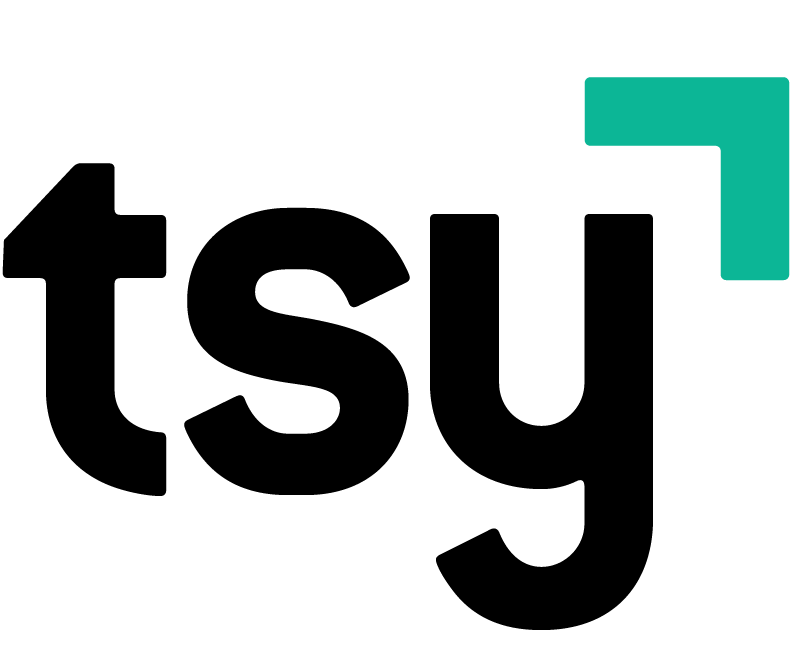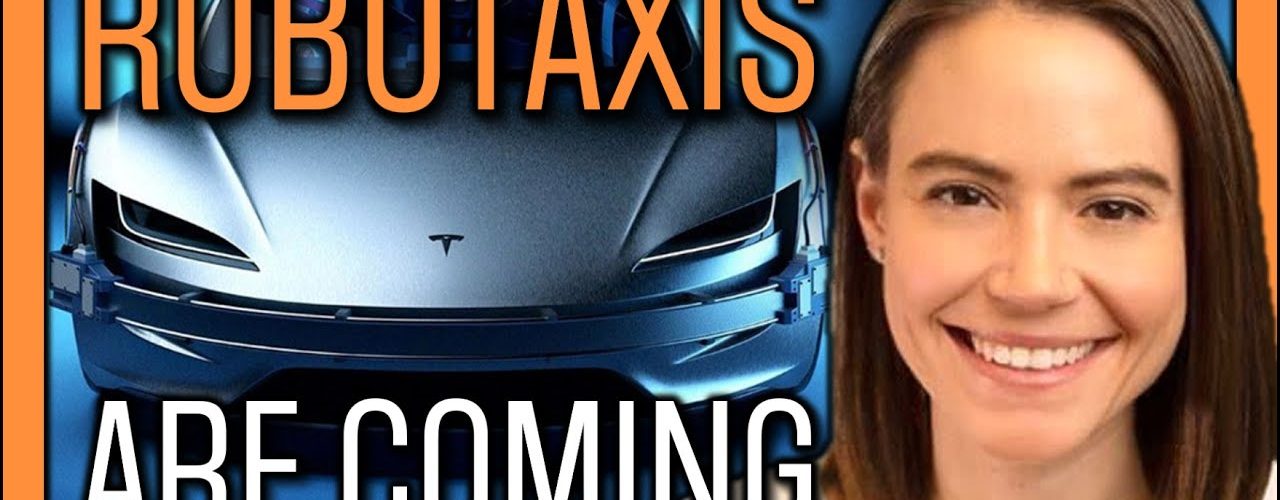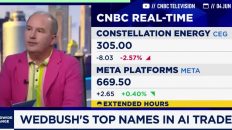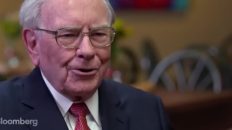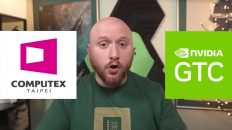Mentioned in Video:
- 🌐 My full resource library: https://www.tickersymbolyou.com
- ⚡ Cathie Wood on Tesla's HUGE Growth & Historic Lead: https://www.youtube.com/watch?v=qTKpjwuKgOI
- ⚡ ARK Invest's HUGE Tesla Stock Price Target Update: https://www.youtube.com/watch?v=rzTS6Nz8ATQ
- ARK Invest's Big Ideas 2021: https://ark-invest.com/big-ideas-2021/
- ARK’s Price Target for Tesla in 2025 (Tasha Keeney): https://ark-invest.com/articles/analyst-research/tesla-price-target-2/
- Could a Tesla Ride-Hailing Network Run Over Uber and Lyft? (Tasha Keeney): https://ark-invest.com/articles/analyst-research/ride-hailing/
- Autonomous Ridehailing Could Be More Profitable Than We Had Modeled (Tasha Keeney): https://ark-invest.com/articles/analyst-research/autonomous-ridehailing-fees/
- Takeaways from Our Recent Podcast with Elon Musk (Tasha Keeney and Cathie Wood): https://ark-invest.com/articles/analyst-research/elon-musk-podcast/
- Support the channel and get extra member-only benefits by joining us on Patreon: https://www.patreon.com/tickersymbolyou
🤩 #ARKInvest has a warning for automakers: the future of transport electric AND autonomous. #Tesla (#TSLA) is leading the charge on both fronts. Let's unpack the trends and technologies shaping the future of travel and see why Tesla stock sits at the top of #ARKK, #ARKW, and #ARKQ. Will other automakers be able to catch up to FSD Beta 9 or will they get driven out of the market by one of the best stocks to buy now?
Video Transcript:
[00:00:00.000]
I mean, if you're a traditional automaker, you must be so scared right now you're trying to save your core business in the pandemic. And on top of that, you're trying to build an electric autonomous vehicle. And really, none of them have successfully done that.
[00:00:13.510]
Today, when you want to go somewhere, you probably get in your car and drive there. If you live in an urban area, maybe you hail an Uber or a Lyft, get into somebody else's car and have them drive you there instead. I personally think that the 2020s could be the last decade where this will happen. So in this episode, I'm going to show you the current state of the art in autonomous mobility, what the future of transportation could really look like and how Tesla is driving us there.
[00:00:39.150]
If you enjoy this type of commentary and analysis, consider liking this video and subscribing to the channel with all notifications turned on. That way, you'll be the first to know when I come out with new, crazy ideas, regardless of how YouTube tunes its algorithm. Let's drive right into it. Here's something I bet you didn't know. The PlayStation 5 is the fastest selling gaming console in U. S. History, both in terms of units sold and in terms of dollars. Sony sells the PlayStation Five at a loss.
[00:01:06.690]
In fact, most video game consoles are sold at over 20% loss. If you include things like marketing, holiday discounts and so on, they do that because the real gains are made on the software and subscriptions that get bought afterwards. Here's another interesting fact. It takes about the same amount of money, roughly $500 to make the iPhone 11 Pro Max. Apple sold that phone for more than double what it costs to make, giving them a pretty hefty profit margin on their hardware. In both cases, the PlayStation and the iPhone,
[00:01:35.530]
the platform providers charge a roughly 30% platform fee. So even if people aren't buying Sony's or Apple's software specifically, they're still making money from companies like Netflix when users use that service on their PlayStation or iPhone. In my opinion, Tesla will follow the same model. The car itself will be the hardware platform, and many different pieces of software, services and other user experiences will be built on top of it. Netflix is one example. Right now, Tesla's cars are in competition with traditional auto, like the first iPhone was competing with Nokia's phones.
[00:02:08.790]
Remember those? At the time, Nokia's N95 and the iPhone looked like directly competing products. Obviously, in hindsight, they couldn't be any more different and Nokia's market share collapsed accordingly. With that context, let's go back to the clip I played at the beginning. As you listen, think about what it means for Tesla to lower the hardware costs of their platform. Knowing that the real money comes from software packages and services, just like with the PlayStation and the iPhone.
[00:02:34.760]
Tesla is reducing battery costs by 50%, increasing range by over 50% and reducing investment. So the cost build factories by 70%. I mean, if you're a traditional automaker, you must be so scared right now. I mean, you're trying to save your core business in the pandemic. And on top of that, you're trying to build an electric autonomous vehicle. And really, none of them have successfully done that, especially on the EV front.
[00:03:02.180]
I want to pick you up on what you just said there, because in the past we've discussed this. You've said, look, Tesla's battery technology is what, four years ahead of the competitors. Are you now saying if and I'm putting a big emphasis on if they can achieve this, then that lead would be insurmountable.
[00:03:21.120]
I think that's exactly what this means. The cheaper car is also another point in that bucket, right? Because now, if you want to match Tesla on price and performance, how are you going to do that? Their cars are getting even cheaper. They're breaking into other customer segments. And now Tesla is just running away from them.
[00:03:38.920]
It's quite fascinating, as if we're talking about a $25,000 entry point. And actually, they were saying a fully autonomous Tesla. But we'll skip that bit because I know you get very excited about their advances in autonomous technology and the data collection, too, because if you look on the lifetime basis of an electric vehicle, it works out cheaper. But it's the entry point, the relative height or the greater cost that's aqdifficulty for many people here. If you can bring those kind of costs down then there's a double whammy here, too.
[00:04:08.320]
But this is all about the future. And I think that's what investors are focusing on today.
[00:04:12.730]
That's great. But it's not enough to innovate and simply lower your prices. You actually have to hit critical price points for people to buy your product. If you want to sound extra smart at your next dinner party… Wait, do people still go to those? This is called the price elasticity of demand, which is a fancy way of saying that there's usually an exponential relationship between price going down and demand going up. For example, if you cut the price of your product in half, maybe four times as many people buy it, meaning you actually just doubled your money.
[00:04:41.630]
Nobody would pay $1,000 for the latest PlaySt… Almost nobody would pay $1,000 for a PlayStation 5, which is why Sony sells it at a loss. The more homes the system gets into, the more people they can cross sell and upsell on high margin digital media. So before we can imagine a future filled with autonomous robotaxis, we have to ask the same question about Tesla's platform. Will their hardware margins be like the iPhones or will they have to ultimately sell it at a loss like the PlayStation to be competitive?
[00:05:13.180]
I think that what most people are missing. So for a long time, we've heard that there's this demand problem with electric vehicles. To us that's kind of a crazy idea, because if you look at this from a cost perspective, we've done the modeling using something called Wright's law, it's a derivation of Moore's law. So we think that battery costs are declining such that by 2022 a mass market EV will be cheaper than a gas powered car. Once that sticker price changes, you get a massive uptick in demand. So we don't see demand being an issue at all for the company.
[00:05:52.840]
And that cost equation will also help Tesla's margin. So right now, auto margins are that about 50%, a little bit less if you take out credits. We think that could go to up to 40% if you follow Wright's law, which has forecasted cost to clients in the auto industry for over 100 years. And then I think only recently have we gotten any questions on autonomous driving, and it's something that Tesla has been talking about for years, and this could totally change the business model. It will be a recurring revenue model like ride hailing as opposed to a one off sale.
[00:06:25.830]
So we think that's a massive opportunity.
[00:06:27.920]
Tasha Keeney is ARK Invest's analyst focused on autonomous technology and robotics strategy. In the next year or two, Tesla's platforms will start competing with the most popular cars like Toyota's Camry, Civic and Corolla. And Tesla won't have to sell it at a loss to do so, autonomous robotaxis could cost as little as $0.25 per mile to operate, spurring widespread adoption. The reason this matters is because Tesla ultimately needs to make autonomous ride hailing affordable enough, not just for people to buy in, but profitable enough for businesses to build an ecosystem of services and experiences on top of it at scale. This lower price point can still generate significant margins, which would expand the total market from $150 billion in revenue to over $6 trillion.
[00:07:13.350]
That's well over a 50% compound annual growth rate over the next nine years into 2030. I think of Tesla's full self driving software like the operating system on the PlayStation or the iPhone, because solutions built on top of the platform still require the operating system to function. Tesla's camera-only approach to FSD is incredibly challenging, but requires no infrastructure like geofencing or other external sensors to work. That means Tesla can scale the solution as fast as they can solve the problem instead of having to adjust their timelines for local jurisdictions or third party vendors.
[00:07:47.000]
That's a big differentiator for any business that wants to build on top of that platform. I really believe that Tesla is the only company in any sort of position to scale this way, thanks to the billions of autonomous miles of camera data they've already collected and their ability to automatically tag it with range data from the radars that are in their cars on the road today. So let's look at how well the solution is working today. This is Lombard Street in San Francisco, a long, winding sloped road that's infamous for getting jammed up with traffic, pedestrians and awkward driving situations.
[00:08:19.670]
Check out this quick clip by AI Addict showing how well Tesla's new version of FSD performs in a few very hairy situations.
[00:08:27.380]
Hi, welcome to this new video. We're on beta nine. We're going down Lombard Street. Let's see how well Tesla's new FSD beta nine can do on Lombard. There's a lot of people they're kind of really pushing us through here. Navigation really doesn't want us to go down it, but I'm going to see if I can force the most towards the beginning of it is coming through right now they start driving. The car is driving itself, by the way, while that guy's on that. Well.
[00:09:11.510]
We'Ll talk about that. You did what a great 1 bar video. Yeah, you can see how the top can do that. I was not doing that back there a second go.
[00:09:23.270]
Still using the turn signals a lot, but a lot smoother than the last time we wow.
[00:09:28.230]
Wow.
[00:09:28.410]
I actually made this turn. Is it going to make it? No, almost, Lombard.
[00:09:35.340]
Almost, Tesla. If you mess it up. Yeah, we went on to the hard fact to find empty times the street we might need hard ratify the street empty during the day.
[00:09:54.780]
It's doing it so much better than 8.2. It has so much more confidence.
[00:10:00.120]
Tesla software is getting better and better in incredibly difficult situations, like getting cut off in very tight spaces or pedestrians walking through the cars' lane and awkward angles. A fully autonomous transportation platform will need to handle all of these cases reliably if that $7 trillion market I mentioned earlier is going to include things like autonomous tourism. If you want to understand the details around some of Tesla's other massive innovations and why I think their autonomous platforms will win the decade. I broke them all down in a recent episode.
[00:10:31.840]
I'll leave a link to that in the top right hand corner of your screen right now, and in the description below as well. For now, the progress that Tesla is making with their vision-only autonomous mobility platform is making me increasingly confident. So I'm comfortable checking that box. Now that I've shown you that the economics make sense and the hardware is getting more and more capable at scale, let's see where Tasha Keeney thinks the biggest use cases for autonomous mobility will be in the future. And then I'll add in some of my own crazy ideas.
[00:11:01.120]
We think most of urban driving will go autonomous, and that's where the majority of miles occur today in urban markets. So you can think of it as a two car household becoming a one car household, a one car household moving to zero cars. So if you live in a city, chances are you won't need to own a car, and you could just take an autonomous Uber every day to work if you wanted to. We think this could be a boon to the entertainment industry for instance, you could have more Netflix subscribers if everyone's freed up to do whatever they wanted in the backseat.
[00:11:31.320]
Of course you could be doing work. But I mean, I sort of planes are any indication of what people do. We think most people probably want to watch TV. It really just gives back time to the consumer. And what's interesting sort of if you look at this on an economic perspective, that's really unpaid labor.
[00:11:47.590]
Let's expand on Tasha Keeney's use case for an autonomous mobility platform. According to a Reason Statistic Consumer survey, 75% of American workers and students still commute in 2021. This is a post-pandemic number that includes the shift to remote work and schooling. The median one way commute time is around 25 minutes. So people spend 50 minutes a day or over 4 hours a week in a vehicle. This is just commute time. It doesn't include things like going to the mall, visiting friends and relatives, dining out, or any other reason people set foot in their vehicle.
[00:12:20.710]
Let's add all those things up and say they add just ten minutes of car time per person per day, meaning the average person probably spends about 5 hours per week in their car. People today spend over an hour a day on subscription streaming services. That's a number the pandemic certainly caused to go up. The time people spend streaming is happening more and more on mobile devices. In fact, back in 2019, more time was spent streaming on mobile devices than on non mobile. Today, nearly all the extra time people spend online is on mobile.
[00:12:50.110]
Based on Tasha's comments and all of these statistics, it's not unreasonable to assume that if autonomous driving frees up your time, that time will go back to mobile streaming. Let me know in the comments below, how much time you've spent driving in the last year. What would you do with your time if you didn't have to drive? Would you do work in the back seat or watch a show or something else? I'm excited to hear your answer. Okay, from now on, let's assume that Tesla does solve autonomy and can clear all the regulatory and insurance hurdles and launches the robo-taxi network.
[00:13:19.460]
I know it's not a sure thing, but let's say it does happen. Then Tesla would effectively double the amount of time people could be streaming content from 1 hour a day to two half of which would be exclusively inside their own vehicles. Tesla definitely knows this because their infotainment system is constantly being upgraded and their over-the-air updates continue to include more access to different car modes, games and other entertainment services. Also, if you didn't know, Tencent, a Chinese conglomerate that owns 5% of Tesla, is a stakeholder in a lot of social media, social commerce and entertainment properties, many of which I'm sure will be available through Tesla's Infotainment Systems in China, the world's biggest urban auto market.
[00:14:00.860]
Quick side note: I think this is one reason that Tesla sits at the top of ARKW, ARK Invest's fund themed around the next generation of Internet applications. They're going to add a digital experience layer to physical point to point transport. Tencent also sits inside this fund. I'm the kind of person who wouldn't really set myself up to do work for only 15 to 30 minutes at a time, so I would definitely spend that time catching up on news or entertainment or chatting with friends. Unless Tesla gave me a compelling reason to do something else. Think about all the third party apps, subscriptions, and services you could build on an autonomous transportation platform like this.
[00:14:38.760]
Passengers inside a selfdriving car are literally a captive audience for the duration of their ride. What if Tesla used the information it knows about you, the types of things you and passengers like you enjoy the duration of your trip and the places you'll pass along the predetermined route to provide the most enjoyable, custom tailored point A to B experience possible. For example, imagine Tesla knows you're on a 45 minutes trip to a restaurant. You sign in on your Tesla Ride Hailing app, just like you would for Uber today, Tesla puts together a fun 45 minutes playlist full of leisurely songs, as opposed to a workout playlist or music that helps you study.
[00:15:15.200]
It also sees that you have Netflix, so it recommends two episodes of different shows you're currently watching that add up to 45 minutes. Or here's a new game on the Tesla arcade that you can try for free for this trip only. Each round takes around 15 minutes to play, which means you can get exactly three rounds in before you arrive at your destination. Just pick which of these three things you'd like to do, and you can always swap between them from the main ride hailing menu.
[00:15:38.900]
It also lets you know that you're passing two stores that passengers like you enjoy, and the third one that you marked on your own Google Maps. Do you want to add any of those as a stopover? Imagine that you pass stores or venues that partnered with Tesla. The infotainment system offers you limited duration discounts. You have only a few minutes to tell the car to stop at the store before the discount goes away, so the car doesn't have to waste too much energy and time doubling back.
[00:16:03.870]
What about a Show Me Around Town mode where the platform dynamically learns the hotspots for different scenes in each town. History, sports, music, cuisine, and so on, and you get a special onetime discount for any spot you stop on along the tour. Think about how cool it would be to cruise down Lombard Street if you genuinely felt safe in the car and didn't have the stress of driving it yourself. What about services or experiences'? Super chargers that you can opt into allowing the car to recharge during your trip, but you get some sort of discount or reward in exchange for that extra time.
[00:16:36.320]
What about a caravan mode where a lead car puts in a destination and other cars can sync up to it and follow it. This is just the tip of the iceberg of how I think people will be using Tesla's autonomous mobility platform and what the best apps in their ecosystem will cater to. Comment below or tweet me @tickersymbolyou. Would you try any of these crazy ideas? What other apps or services or experiences do you think could be built on top of this autonomous mobility platform?
[00:17:02.810]
Or if you're skeptical about this vision of the future and think I'm investing in a pipe dream, comment below with what you think I'm missing? Either way, I'm excited to hear your thoughts. I hope this episode helped you understand some of the technologies, trends, and economics behind autonomous mobility today. What this massive $7 trillion industry could look like over the next decade and how Tesla's solution is leading the pack. If it did, let me know by investing in the like button and subscribing to the channel with all notifications turned on, that's a great way to invest in the channel that invests in you. Until next time.
[00:17:36.120]
This is Ticker Symbol: You. My name is Alex reminding you that the best investment you can make is in you.
If you want to comment on this, please do so on the YouTube Video Here
